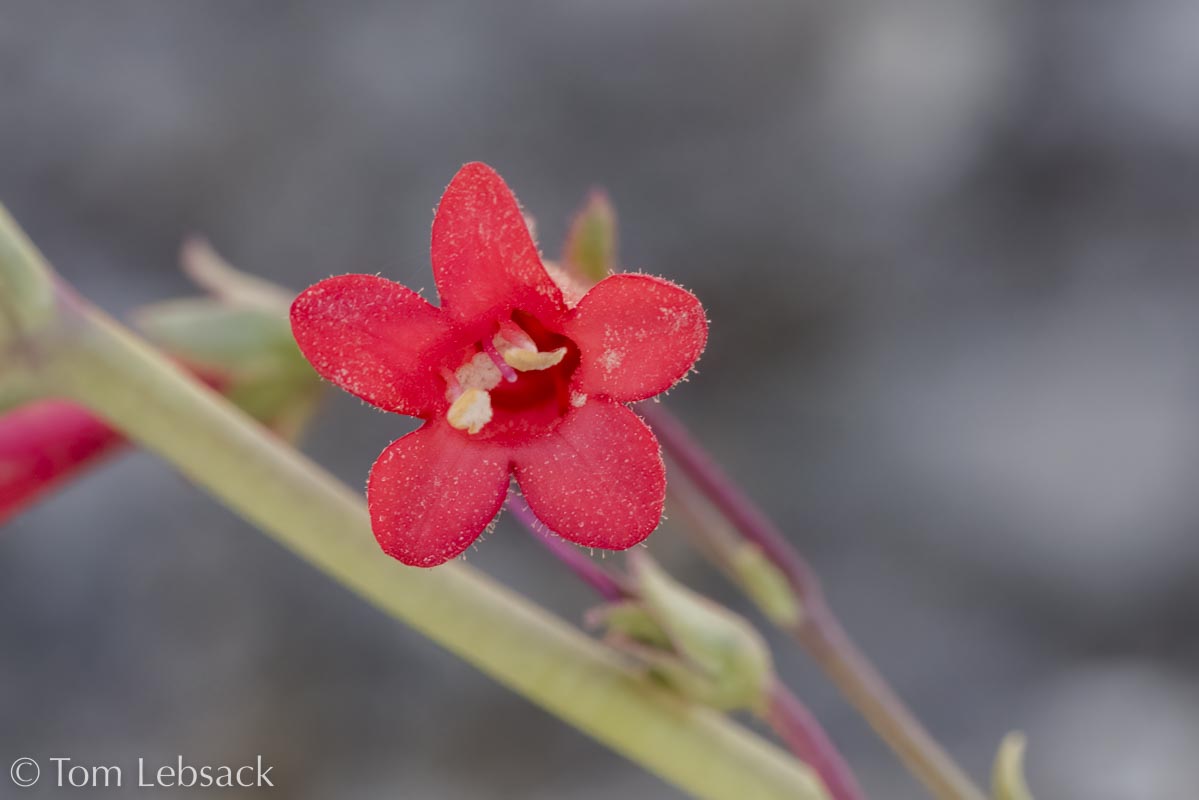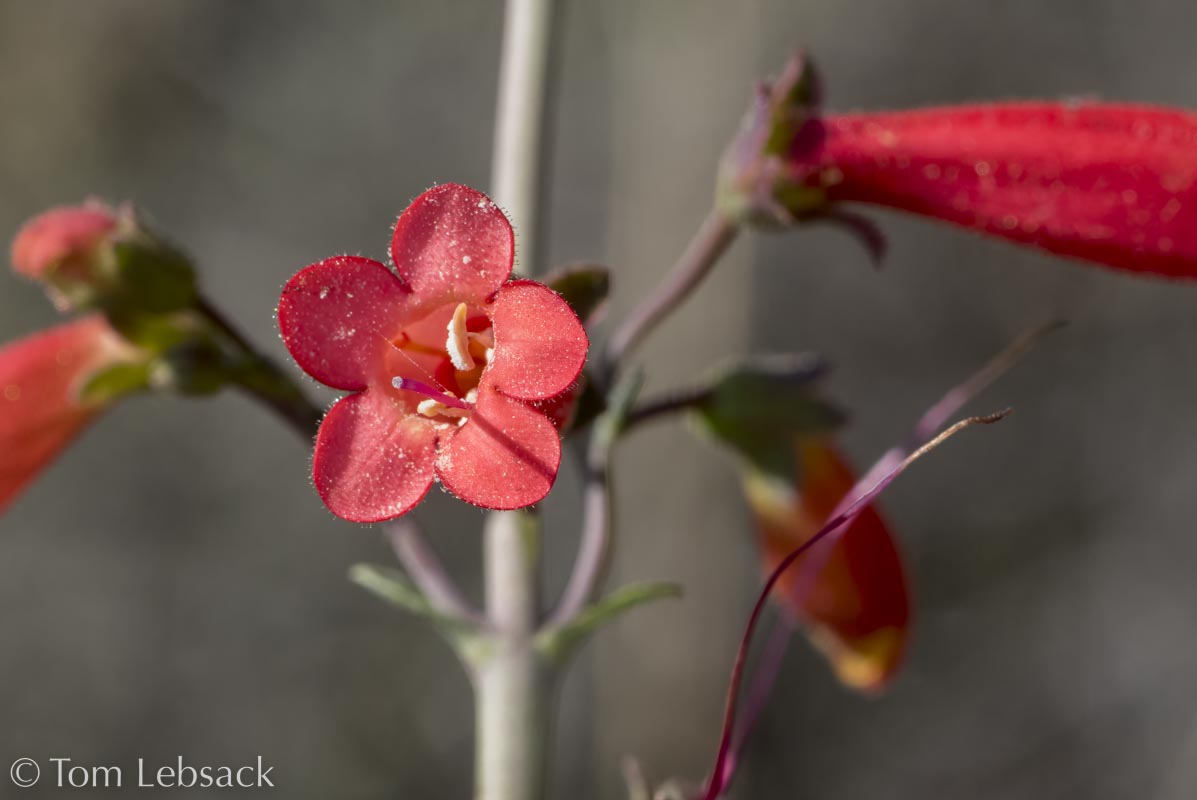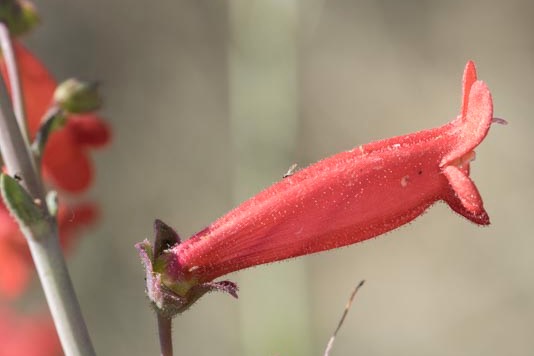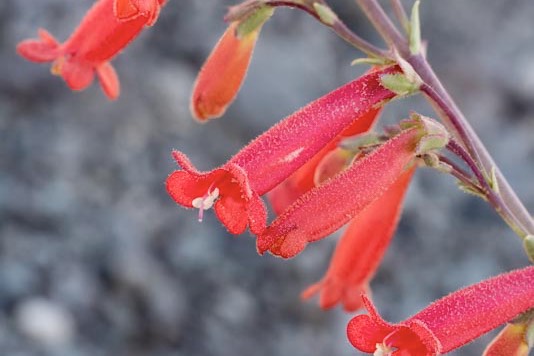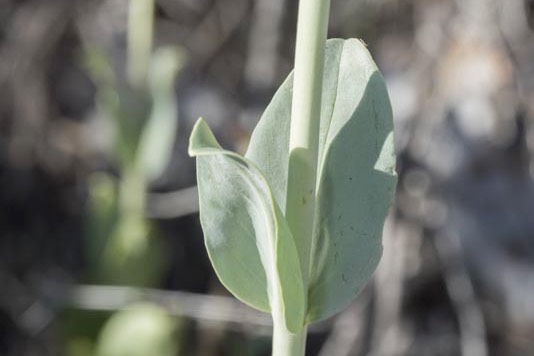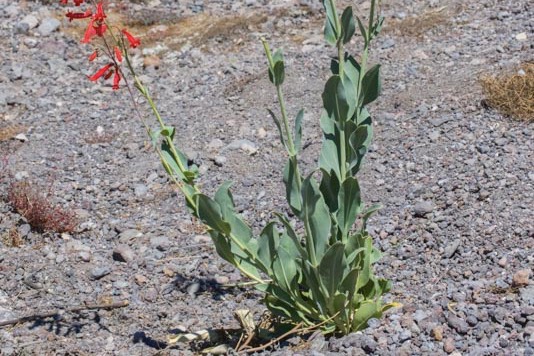Texas Wildbuds
Penstemon havardii
(Big Bend Beardtongue)
| Scientific Name | Penstemon havardii | USDA PLANTS Symbol | PEHA2 |
| Common Name | Big Bend Beardtongue, Havard Penstemon | ITIS Taxonomic Serial No. | 504215 |
| Family | Plantaginaceae (Plantain) | SEINet Reference |
Click Here |
| Description | Habitat: Dry, gravelly drainages and canyon walls in higher elevations such as Chisos Basin in BBNP; endemic to Big Bend area and adjacent areas of Mexico; 4500 to 5900 ft. Plant: Erect, perennial to 3 to 4 feet tall, multiple, unbranched, grayish stems. Leaves: Thick and fleshy, spatulate, grayish lower leaves; light green ovate to lanceolate stem leaves, 1-1/2 to 3 inches long, sessile; up to 3 inches long and 1-1/2 inches wide. Inflorescence: Terminal racemes of tubular, two-lipped, bright scarlet to orange flowers, each about an inch long; upper lip 2-lobed extending beyond the lower, 3-lobed lip. Bloom Period: April to October. References: Flora of North America, "Little Big Bend" by Roy Morey and "Wildflowers of Texas" by Michael Eason. |
BONAP Distribution Map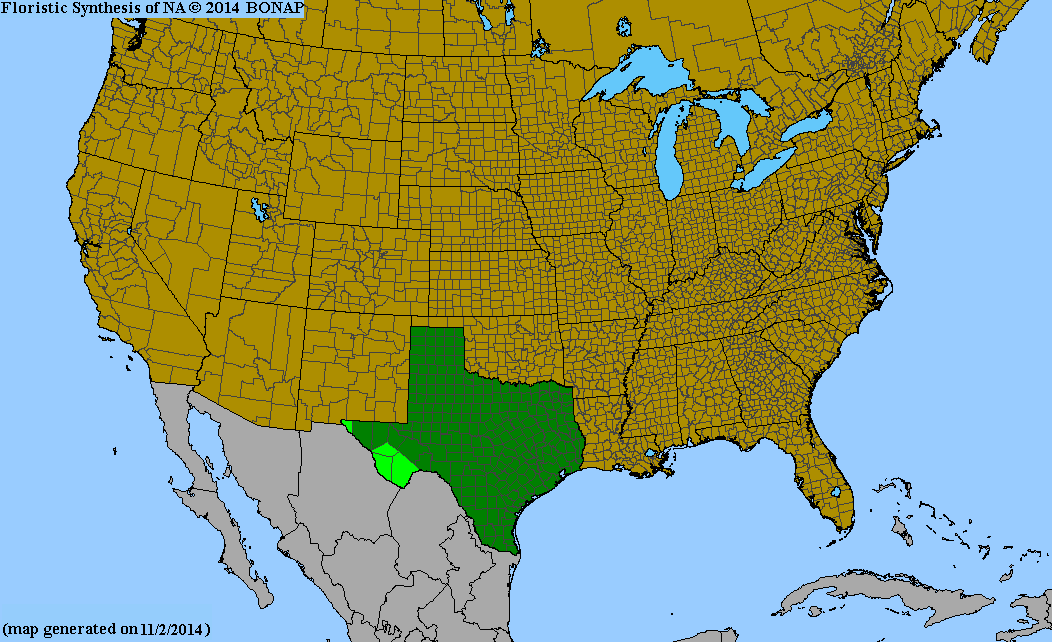 Map Color Key Map Color Key |
Texas Status: Native |
Banner photo of Castilleja indivisa and Lupinus ssp. taken along FM 1323 north of Johnson City, Blanco County
© Tom Lebsack 2025
Every attempt is made to provide accurate, up-to-date, and relevant information, but the completeness or accuracy of any information presented on this website cannot be guaranteed. I use authoritative references to insure high standards of accuracy and review and update the information frequently.
